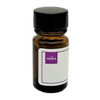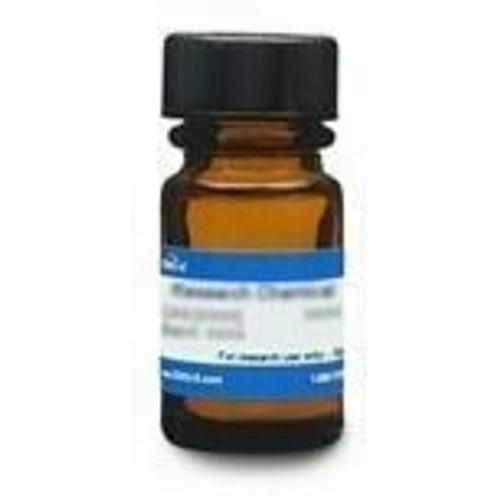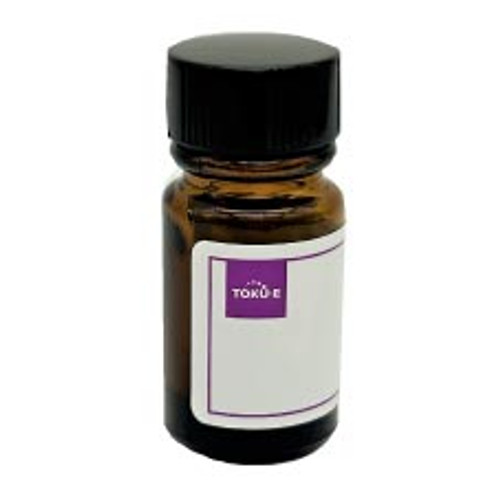Cefetamet Sodium is the sodium salt of Cefetamet, a broad-spectrum third-generation cephalosporin antibiotic. It is classified as a 'aminothiazolyl imimomethoxy cephalosporin' since it has both methyl and [(2Z)-2-(2-amino-1,3-thiazol-4-yl)-2-(methoxyimino)acetyl]amino side-groups. The presence of the iminomethoxy group provides stability against most plasmid-mediated β-lactamses and many chromosomal beta-lactamases. Thisβ-latamase-stable compound has antibacterial activity against Gram-positive and Gram-negative bacteria. Cefetamet is the microbiologically active form upon hydrolysis of cefetamet pivoxil. It is pharmacokinetically similar to Ceftizoxime and Ceftazidime.
Cefetamet Sodium is soluble in DMSO.
We also offer:
- Cefetamet Pivoxil Hydrochloride (C275)
| Mechanism of Action |
Cefetamet exerts its bactericidal action by inhibition the final transpeptidation step of peptidoglycan synthesis in the bacterial cell wall by binding to one or more of the penicillin-binding proteins (PBPs). Cephalosporins interfere with PBP (penicillin binding protein) activity involved in the final phase of peptidoglycan synthesis. PBPs are enzymes which catalyze a pentaglycine crosslink between alanine and lysine residues providing additional strength to the cell wall. Without a pentaglycine crosslink, the integrity of the cell wall is severely compromised and ultimately leads to cell lysis and death. Resistance to cephalosporins is commonly due to cells containing plasmid-encoded β-lactamases. |
| Spectrum | Cefetamet displays broad-spectrum in vitro activity against many aerobic Gram-positive and Gram-negative bacteria. It has virtually no activity against Staphylococcus spp. The compound has similar in vitro activity to cefixime. Cefetamet has activity against pathogens causing upper respiratory tract infections such as streptococci and H. influenzae. |
| Microbiology Applications |
Cefetamet has excellent in vitro activity against the major respiratory pathogens including Streptococcus pneumonia and Haemophilus influenza. However, it has poor activity against penicillin-resistant S. pneumonia. The in vitro activity of Cefetamet is unaffected by the composition of the agar medium, pH or the addition of serum to the agar. In vivo, cefetamet demonstrated antibacterial activity consistent with its in vitro activity in animal models of septicaemia, pyelonephritis, respiratory tract infection and syphilis. Cefetamet can be detected by rapid high-performance liquid chromatographic methodology with UV detection in plasmid and urine samples. It is resistant to hydrolysis by common plasma-mediated enzymes. |
| Eukaryotic Cell Culture Applications |
Cefetamet has immunomodulatory functions on host defense cells. The effect of Cefetamet on inflammatory responses of human granulocytes was evaluated to review their ability to modulate the chemiluminescense response, phagocytose, kill bacteria and generate leukotrienes. In the presence of cephalosporins, phagocytoses increased in E. coli. Cefetamet increased the chemiluminescense response of neutrophils to P. aeruginosa and Proteus mirabilis. |
| Insect Biology Applications |
Aleksić M, Milovanović L and Kapetanović V (2003) Adsorptive stripping voltammetric determination of Cefetamet in human urine. J. Pharmaceut. Biomed. Analysis. 32(4-5):957-966 |
| Molecular Formula |
C14H14N5O5S2 ∙ Na |
| References |
Aleksić M, Milovanović L and Kapetanović V (2003) Adsorptive stripping voltammetric determination of cefetamet in human urine. J. Pharmaceut. Biomed. Analysis. 32(4-5):957-966 PMID 12899982 Hiremath B and Mruthyunjayswamy (2007) Development and validation of spectrophotometric methods for the determination of Cefetamet in pharmaceutical dosage forms. Chinese J. Chem. 25(12):1827-1831 Koup JR, Dubach UC, Brandt R, Wyss R and Stoeckel K (1988) Pharmacokinetics of Cefetamet (Ro 15-8074) and Cefetamet Pivoxil (Ro 15-8075) after intravenous and oral doses in humans. App. Environ. Microbiol 32(4):573-579 PMID 2673663 Mazzella LJ, Pratt RF. Effect of the 3'-leaving group on turnover of cephem antibiotics by a class C beta-lactamase. Biochem J. 1989 Apr 1;259(1):255-60. doi: 10.1042/bj2590255. PMID 2785791 Neu HC, Chin NX, Labthavikul P (1986) In vitro activity and beta-lactamase stability of two oral cephalosporins, ceftetrame (Ro 19-5247) and cefetamet (Ro 15-8074). Antimicrob. Agents Chemother. 30 (3):423 PMID 3490827 Scheffer S, Knöller J, Cullmann W, König W (1992) Effects of cefaclor, Cefetamet and Ro 40–6890 on inflammatory responses of human granulocytes, J. Antimicrob. Chemother. 30(1):57-66 PMID 1429337 Wyss R and Bucheli F (1988) Determination of Cefetamet and its orally active ester, cefetamet pivoxyl, in biological fluids by high-performance liquid chromatography. J. Chromatog. B: Biomed. Sci. and Appl. 430:81-92 PMID 3215964 |







